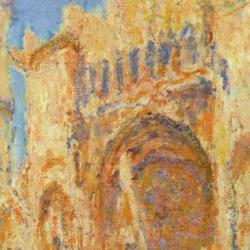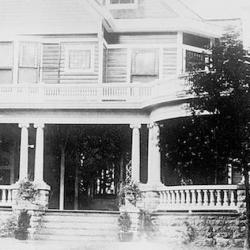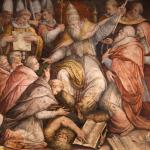In his 1971 study of Modernist architecture, The Golden City, Henry Hope Reed observed that Modernists transferred moral categories to architecture. Buildings could be “honest” (if they revealed their structure on the surface) or “false” (if they hid structure under ornamentation).
Purity was invoked regularly as a positive standard of architectural achievement: “‘Pure’ was an early favorite to describe something devoid of ornament, and the Franco-Swiss Modernist, Le Corbusier, has gone to the length of inventing an abstract movement called ‘Purism.’ ‘Clean,’ another synonym for functional, is also in factor as seen in ‘clean lines,’ ‘clean surfaces’ meaning that there is no ornament, while ‘clean engineering’ means visible structure.” “Beauty” was making a comeback in 1971, but only when it was modified—“pure beauty” (54).
Abstraction was a means for achieving the desired purity. Abstract art “was divorced not only from the past but from the outer world, the world of people, objects, images, and even ideas. Like the abstract painter who turns to his inner world to discover the voice of genius, the architect can do the same and offer what he heard in terms of concrete, steel, and glass; by inference this inner world of primal forces, completely cut off from the outside, is purer and finer.” Reed admits that “the mystical aspect of Modern buildings has often escaped the beholder,” but observes that it is evident “in the writings of more than one architect trying to explain his abstraction” (47–48).
Pure architecture is architecture as if there were no people, no time, no past, no tradition. Buildings as clean and distinct as the Cartesian Cogito.
Reed cites a passage from House of Seven Gables that highlights the distinctively American sources of this Modernist puritan mysticism. Holgrave is speaking: “Shall we never, never get rid of this Past? It lies upon the present like a giant’s dead body! . . . But we shall live to see the day, I trust, when no mane shall build his house for posterity. Why should he? . . . If each generation were allowed and expected to build its own houses, that single change, comparatively unimportant in itself, would imply almost every reform which society is now suffering for. I doubt whether even our public edifices—our capitols, state-houses, court-houses, city halls, and churches—ought to be built of such permanent materials as stone or brick. It were better that they should crumble to ruin in twenty years, or thereabouts, as a hint to the people to examine and reform the institutions which they symbolize” (49). Only the new can be pure, untainted by the past.















